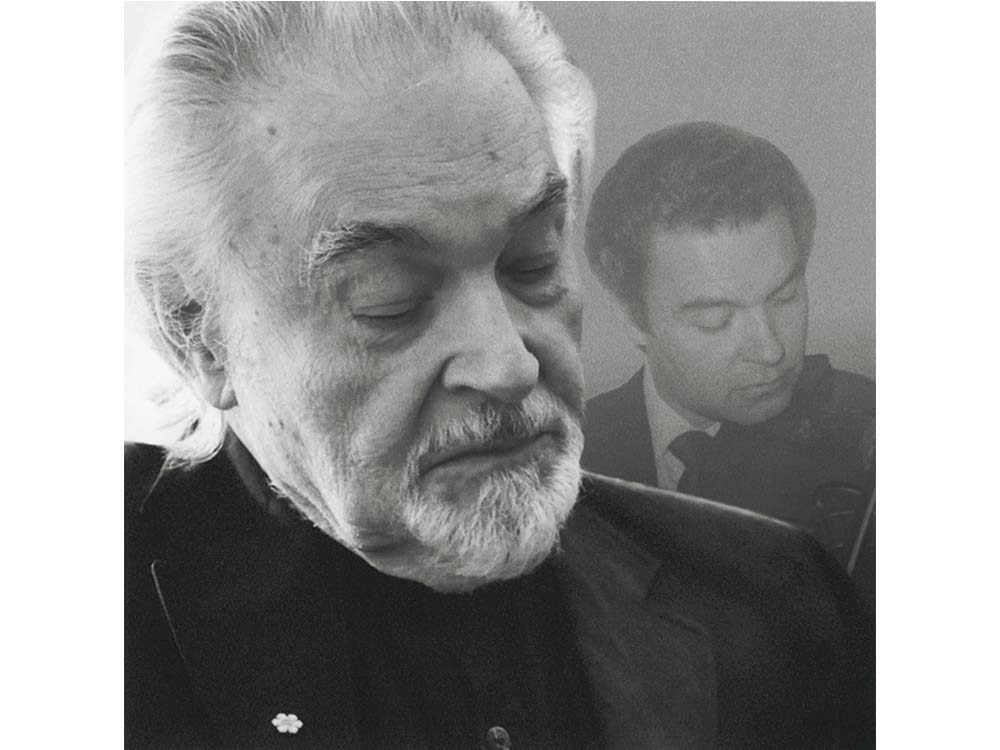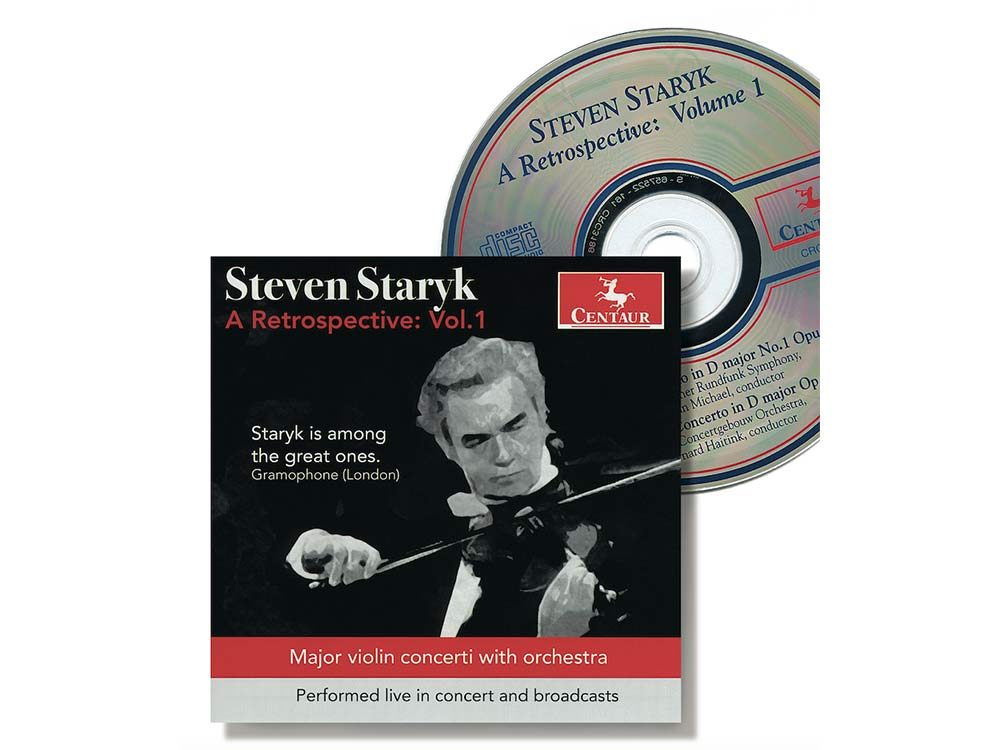
Who Is Steven Staryk?
Steven Staryk, a Toronto-born Ukrainian Canadian, survived the early loss of his father and the infamous McCarthy blacklists to become a legend to violinists, teachers and professional critics worldwide. His legacy? A magnificent set of incomparable recordings.
During the Ukraine famine of 1929, Marynka Staryk immigrated to Toronto, married and had a son: Stefan (the original spelling of his name). In 1933, his father committed suicide. Marynka re-married and watched her boy’s interest in music blossom. Although he was enamoured of the accordion, she brought home a tin violin from the local Woolworth’s store. The sounds young Steven coaxed out of this toy were so striking that his parents saved up money to buy their son a real violin. So began an international career.
Few professional violinists reach the stage where they can successfully perform the major compositions of Niccolò Paganini. The first time the general public heard a 16-year-old Staryk perform one of the most difficult of the Paganini concertos, the Toronto Star’s music critic reported, “The feat could be roughly compared to executing a ballet dance on a tightrope…the audience applauded wildly.”
Staryk became the youngest member of the Toronto Symphony, but in 1951, during the McCarthy era, he and five colleagues were denied admission into the United States for the orchestra’s first-ever foreign concert. Handed a lemon, Staryk made lemonade by playing any and all jobs available in Toronto—symphonic, chamber, jazz, pop, ethnic—all while completing his academics at night school. In 1956, a friend asked him, “Why don’t you just get out of here?”
He did precisely that. Arriving in London, England, he attracted the attention of Sir Thomas Beecham, who appointed him concertmaster of the Royal Philharmonic. Rave critical reviews led the most prestigious musical journal in the violinist world, The Strad, to name him the “King of Concertmasters.” Music and Musicians commented, “Much of the credit for the enormous improvement in this orchestra must go to its vital leader, Steven Staryk.”
Staryk soon moved on to one of continental Europe’s finest orchestras—Holland’s Royal Concertgebouw. According to Musical Opinion, the orchestra was “playing more brilliantly than ever…under the new leadership of Steven Staryk.”
Check out the 25 Greatest Canadian Albums of All Time.

The Legacy of a Violin Legend
Eight years after being refused admittance to the United States, Staryk took up residence in Chicago and the Washington Post announced, “Beautiful work came from the orchestra’s great concertmaster, Steven Staryk.” In triumph, he finally returned to Canada as concertmaster for the Toronto Symphony. The Globe and Mail reported that he “inspired the violin section to some of the most exciting playing heard from it this season.” And Irving Kolodin—king of the American music critics—commented that Staryk was “the only contemporary ‘virtuoso-concertmaster’ to be a star soloist.”
Complementing Staryk’s journey as a concertmaster and soloist was his professional teaching career. Among other achievements, he created a recording of the basic study sequence required for anyone seriously interested in a professional career, titled Every Violinist’s Guide: 36 Traditional Caprices, Etudes and Studies. Russian master David Oistrakh took note and relayed his sentiments to Staryk: “Congratulations for this valuable idea.”
From his earliest days as a musician, Staryk strived towards two closely linked objectives: maintaining an active solo career and playing a violin that satisfied his quest for instrumental perfection. In the decades after his introduction to the “Woolworth’s tin special,” he worked through six of the most exquisitely beautiful and valuable violins in the world, ultimately arriving at the sound he wanted with the 1727 Ex “Barrere” Stradivarius. During this process, he became an expert in the murky jungle of violin pedigrees.
In the late 1990s, Staryk and Thane Lewis published Fiddling With Life, a career eye-opener. A decade later, another project appeared—The Staryk Anthology. This 30-CD romp through Staryk’s performances from 1956 to 2003 provided an exceptional overview of his classical violin repertoire, chamber music, jazz stylings, gypsy fiddling and his Every Violinist’s Guide. “In my opinion,” stated University of Michigan Professor of Violin Stephen Shipps, “your anthology is one of the most important recorded documents in violin history.”
In 2012, a recording company began re-issuing selected recordings from the anthology under the title Steven Staryk, A Retrospective. Dave Saemann of Fanfare, which reviews all recorded music, captured the essence of this Canadian violin legend: “These CDs rank among the greatest violin recordings in existence. … In a nutshell, Steven Staryk is a phenomenon.”
Fifty years ago (1968), The American String Teacher commented: “Why it took so long for the Planet Staryk to reach Earth will always remain a mystery.” Three years ago, Fanfare’s David K. Nelson talked to Staryk about this: “In fact, more than a few of your reviews compare you directly with [Jascha] Heifetz. … It is a bit awkward for those of us whose business it is to know the great violinists by name and reputation to find ourselves experiencing ‘the shock of the new’ from performances recorded decades ago by a long-retired artist.”
So here we are in 2018. Lionized by international critics, and an officer of the Order of Canada recipient, Staryk remains largely unknown to the Canadian public. He is now 85, living in Toronto—and he’s one of ours. It’s time for all of us to celebrate this Canadian violin legend and his legacy.